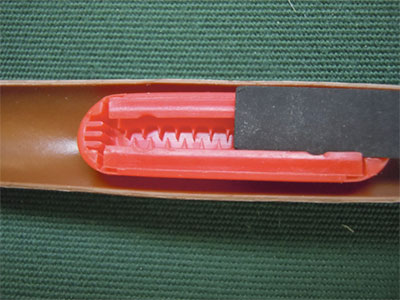In-Line Emitter Tubing

My preferred choice of tubing, in-line emitter tubing, has emitters encased within 1/2-inch tubing at intervals of 12-, 18-, 24- or 36 inches. The emitter pictured is attached on the inside of brown tubing. These emitters have a tortuous internal path (see the photograph) that keeps sediment from clogging them.
The benefits of in-line emitter tubing are that it's easy to install, suffers less clogging than porous tubing and some punched-in emitters, works at the greatest range of pressures (5-25 psi) and has no external parts to snap off. After almost 20 years of use, I have found only a few clogged in-line emitters in hundreds of feet of tubing—even with well water high in iron particles.
The drawbacks to in-line emitter tubing are few: it's not recommended for plants placed far apart or at odd intervals; it can't turn in as sharp a radius as porous tubing and it doesn't easily germinate broadcast-seeded crops like carrots, mache', beets, and turnips. Broadcast-sown crops must be hand-watered until the seedlings have one or two sets of true leaves—then drip irrigation can take over. Large-seeded crops that are planted farther apart, such as beans, squash and sunflowers, can be germinated within the surface wet spots around emitters.
(See my book Drip Irrigation for Every Landscape and All Climates for much more on in-line emitters.)
|

